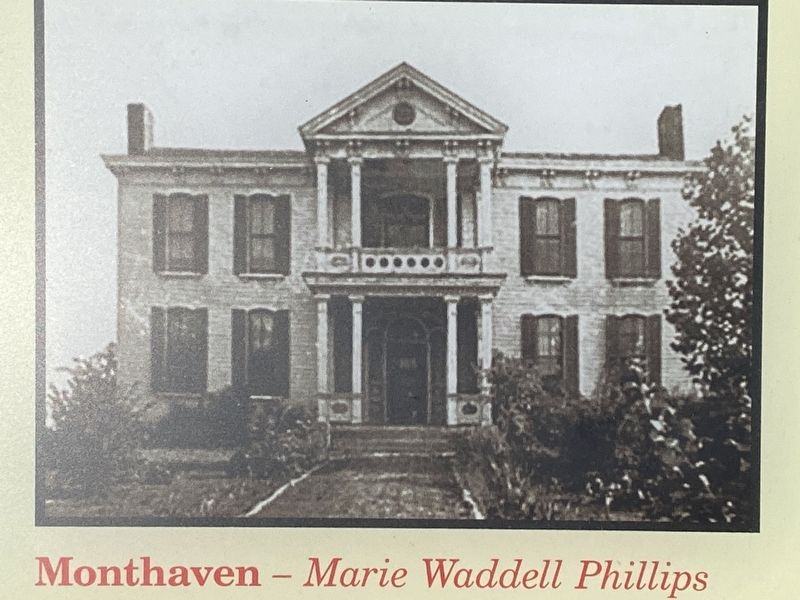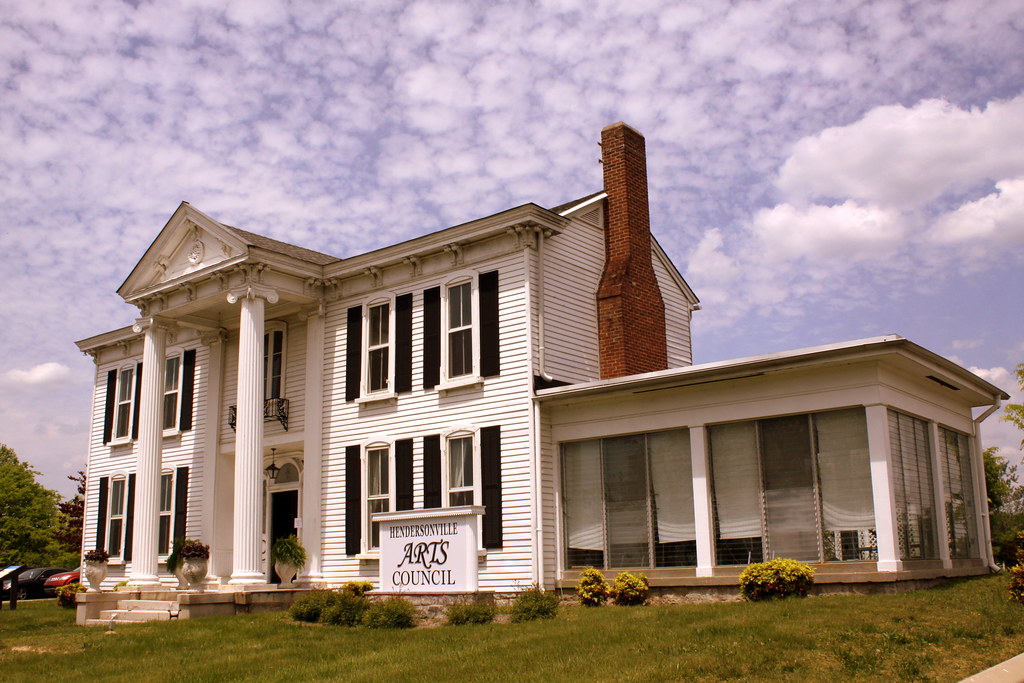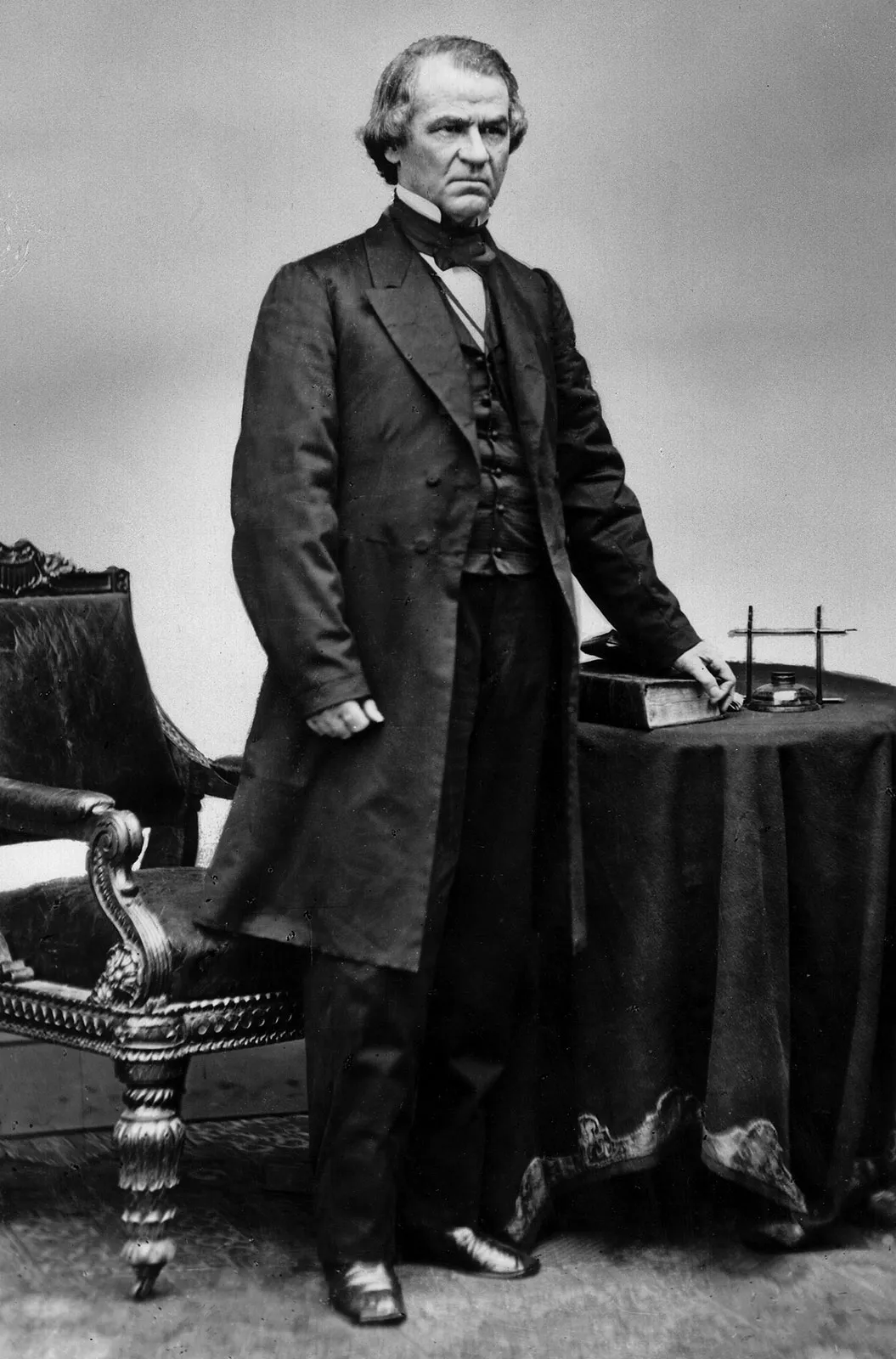History
Time Capsule
Monthaven Mansion and Tennessee History
Monthaven Arts and Cultural Center operates out of a beautiful Antebellum home located in Hendersonville, Tenn. Both the house, called Monthaven, and its surrounding property are steeped in local history.
The story begins in 1783, when a Tennessean named Henry Ruyle (1745-1790), the son of a French immigrant, was granted the property for his service in the Revolutionary War. Comprising 640 acres, the land at that time was still part of Davidson County, North Carolina. Its value stemmed from its proximity to the Cumberland River.
In 1858, a Smith County native and Nashville merchant named Leonard B. Fite (1811-1882) purchased this fertile property with plans to develop it into a working farm. Construction of a grand house was begun using bricks made onsite. Enslaved people carried out the work. The home’s location near the Louisville and Nashville Railroad (L&N) line, however, attracted Federal attention during the Civil War.
After the Union occupation of Nashville in early 1862, Federal troops moved into the surrounding countryside to secure towns and vital transportation routes. The L&N, which connected the Federal Army to Union supplies and reinforcements, was the most important railroad line leading north out of Nashville.



To secure the line, Union troops occupied nearby Mansker Creek railroad bridge in the summer of 1862. They met fierce resistance, and many Union soldiers were killed or wounded by Confederate cavalry raids.
Fite’s nearby house was soon commandeered as a field hospital. Both Union and Confederate soldiers were treated at the house. Many succumbed to their terrible wounds. By the fall of 1862, soldiers from both armies began stripping the farm of its livestock and crops. Fite’s problems, however, were just beginning. In December, Tennessee’s military Governor Andrew Johnson fined Fite $750 to support “helpless widows, wives and children” because of his Confederate sympathies. Later, he was indicted on charges of recruiting for the Confederate Army.
After the war, Fite was one of 850 prominent ex-Rebels from North Carolina and Tennessee to submit pardon petitions to President Johnson as part of the Union’s Reconstruction policy. As a prosperous landowner, Fite was ineligible for general amnesty. But after taking an oath to renew his allegiance to the United States and U.S. Constitution, Fite was granted a pardon in August 1865. He returned to his home, which he began calling “Liberty Hall.”
Following his death, ownership of the house passed through several families until 1932, when Nashville businessman Mont Bliss Comer (1887-1953) acquired it. Comer was a vice president in Nashville’s Washington Manufacturing Company, a textile and apparel firm owned and operated by the Comer family. The company made a fortune during World War II making uniforms for the military. Mont Comer undertook a Colonial Revival-style remodeling of his new house and farm buildings. This work removed blood-stained portions of the home’s wooden flooring from the days when it provided warmth and shelter to Civil War combatants.
Comer reportedly loved the old house so much that his family began referring to it as “Mont’s haven.” The name stuck, and the house and surrounding property has been known as Monthaven ever since.
In the mid-1990s, Comer’s descendants sold the house and remaining 25 acres of property to Nashville businessman Earl Sadler (1922-2009). For Sadler, who owned a trucking company, the purchase was strictly a business investment. He had no interest in the house, so he deeded it and about one acre of land to the City of Hendersonville. The conveyance included a covenant indicating Sadler’s desire that the house be used for the arts. In 1998, Monthaven became the headquarters of the Hendersonville Arts Council (HAC).
Created by ordinance in 1975, HAC was a city agency tasked with promoting the arts in Hendersonville. For the next two decades, members of HAC’s board of directors organized art events at Monthaven. Rooms on the second floor of the house were converted into classrooms, where a generation of students took classes.
In 2015, HAC’s board of directors, led by Chairman Lynda Shaw, voted to create a new 501(c)(3) non-profit organization to manage Monthaven’s affairs and expand its mission. This organization, which was rebranded the Monthaven Arts and Cultural Center (MACC) in 2017, ushered in a new era for the old house.
The downstairs of Monthaven was transformed into a jewel-box art museum, and exhibitions featuring everything from the artwork of Pablo Picasso to the evening gowns of Princess Diana attracted visitors from around the country. Thanks to the leadership of the MACC’s Executive Director Cheryl Strichik, enrollment in art classes and camps have grown exponentially, from about 30 students in 2017 to nearly 700 in 2022. The MACC’s outreach teachers and healing arts facilitators, meanwhile, now provide free services annually to more than 4,000 youth and families from underrepresented groups and to military veterans.
Monthaven House is registered as a Historical Landmark and is part of the Civil War Trails network. Today, the old house built by slaves is dedicated to making the arts available to everyone, regardless of race, gender, ethnicity, age, mental or physical disability, sexual orientation or identity. The former Civil War field hospital is still committed to healing. Only now, its balm is the life-affirming power of the arts.


